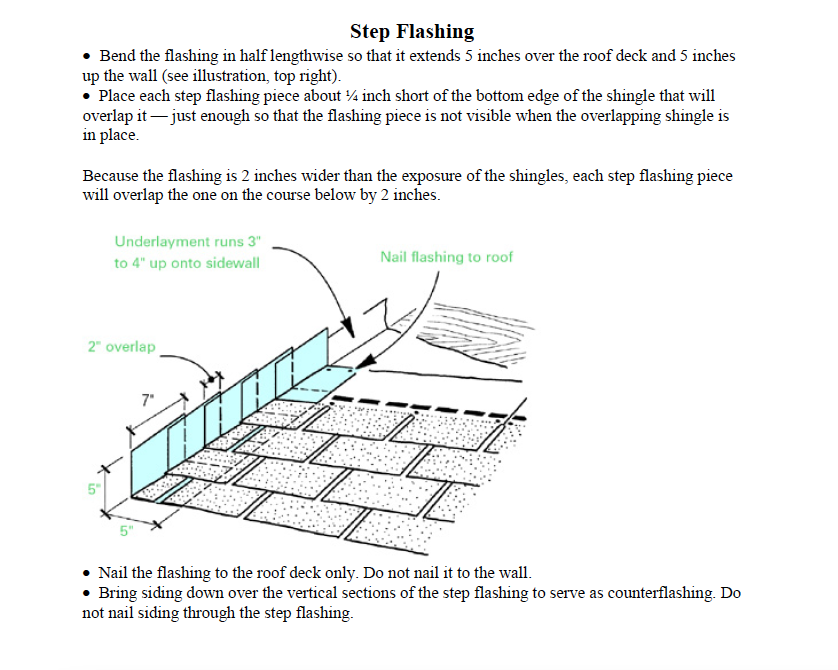Advice on flashing a chimney
« Back To AskARoofer
Viewing 1
reply
(of 1 total)
Author
Posts
January 4, 2023 at 2:39 p.m.
Brandon, a homeowner in Minnesota, asked:
Hello, when flashing a chimney, how high should the apron flashing run up the wall and on the roof? How high should the back flashing run up the wall and on the roof?
January 4, 2023 at 2:43 p.m.
John Stout from Go Roof Tune Up had this to say in response:

Starting at the bottom side of the chimney, install “L” metal with 4” on the roof and 4” up the side of chimney.
Step flashing at sides. 4” on the roof and 4” up the sides of chimney. Lap the flashing to match the exposure of the material used (compo shingles, tile, etc.). Increase the overlap to provide adequate protection in areas of cold weather (Northern Michigan). At the back of the chimney, a backer clashing or saddle is necessary. The backer flashing should be at least 12” on the roof and 6” on the wall. On a chimney of 18” or wider a cricket is suggested. Anything over 24” a cricket is required.
A counterflashing is necessary to close off the top of the flashing metal. In most cases a ½” X 5 ½” metal cut to fit over the flashing by at least 2” is adequate. The metal should fit into a reglet or some type of flashing to seal it with proper caulking.
We hope this answers your questions. There are various items that may be necessary depending on your weather conditions and the type of roof.
Thank you very much for your question. We hope the information is helpful.
From Your Friends at AskARoofer
Viewing 1
reply
(of 1 total)
You must be logged in to reply to this topic.






